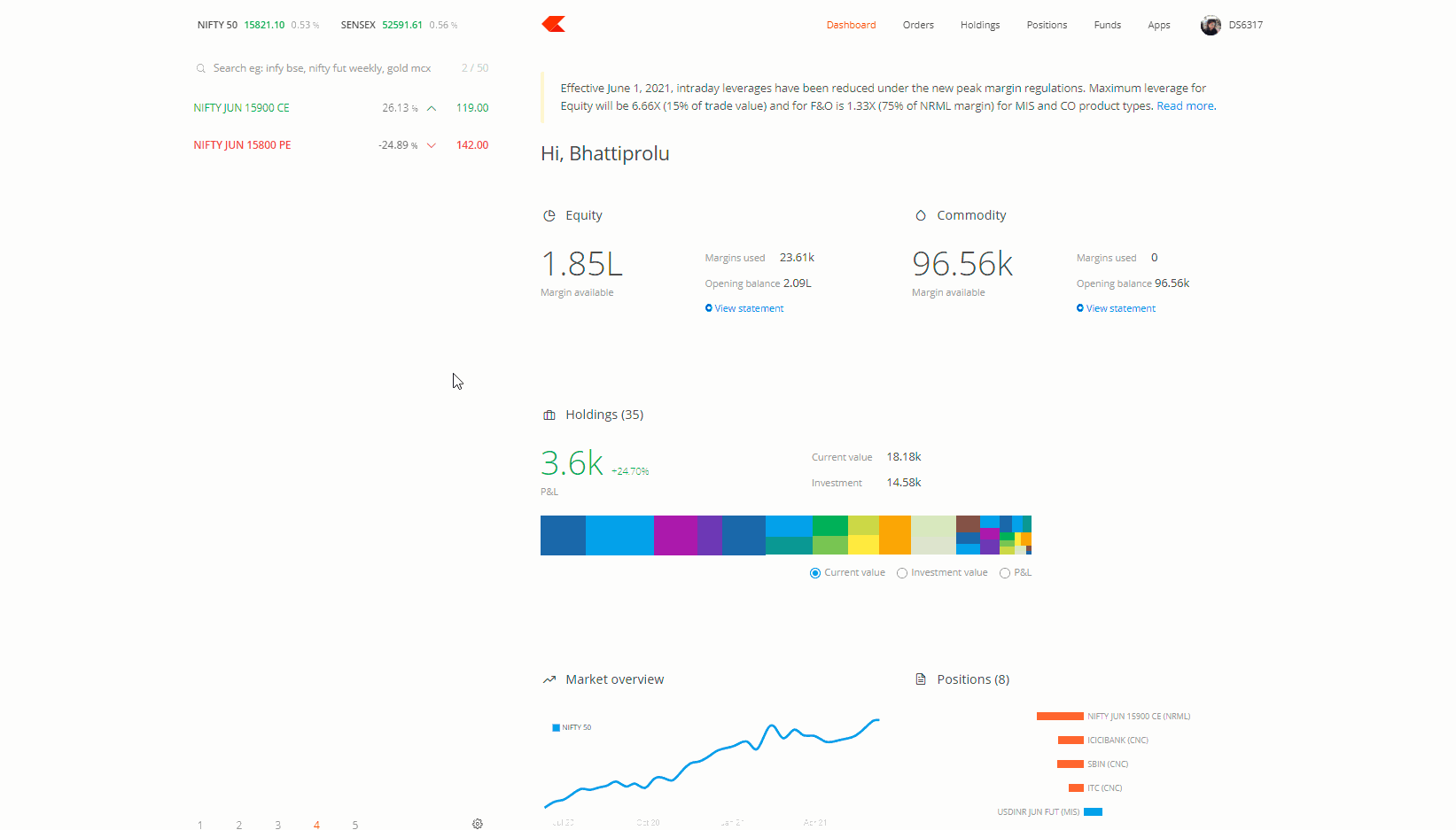Why should a stoploss be set using GTT when buying stock or index options?
Buying options is by the far the riskiest form of trading if you aren’t following proper risk management rules. Your entire invested capital is at risk when you buy an option contract. The option premium can lose most of its value very quickly depending upon its moneyness, time value (theta) or any one of the other factors that affect option prices.
When buying options it is important that you don’t risk more than 2% of your trading capital at any one time. If you are taking positions larger than this, it is important that you define a stoploss and stick to it. Doing this can significantly improve the odds when trading options. Read this Zconnect post to learn more.
You can place a long-standing stoploss order using GTT for your option positions right at the time of buying the options or even from the positions tab on Kite as shown below.
GTT stoploss when buying options
You can set any stoploss % for your order. In case your option buy price is Rs. 80 and you set a 10% stoploss, then the stoploss will get triggered once the option price touches Rs. 72. Since this is a limit stoploss order, a sell order at Rs. 72 will be placed. The trigger price and limit price are the same when placing the GTT stoploss from the order window. You can edit the limit price from the GTT menu under Orders or if you place a GTT from the positions window.
GTT stoploss from positions

If you exit this position on your own (GTT Stoploss not triggered), make sure to cancel the pending GTT stoploss order as shown below.

Note: All GTT stoploss orders by default are limit orders. So in the above example, if the GTT is triggered at 72, a selling Nifty 16000 CE order is placed at a price of 72. If the market moves fast, this may not get executed. A stoploss GTT order if once triggered and is not executed will have to be placed again by you for the next trading day.
Still need help?


